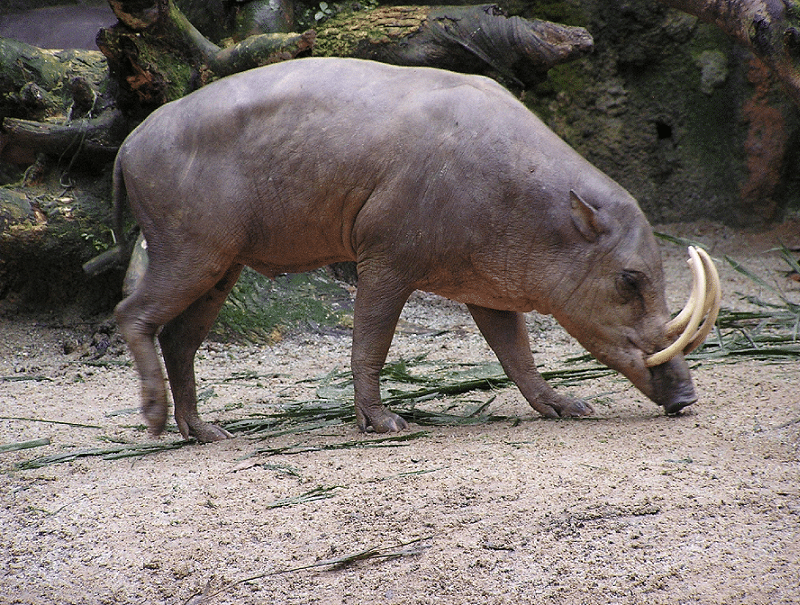
North Sulawesi Babirusa Facts
- Arguably, the North Sulawesi Babirusa has an appearance so distinctive that many consider it to be a prehistoric species. While not truly prehistoric, it does have a long history with humans.
- Additionally, the upward curving tusks of the males pose a serious problem for them. Due to their growth rate and curvature, a male who fails to grind them regularly will die, as they will eventually pierce his own skull. What a horrific death this must be.
- The males have the remarkable four tusks but females display no tusks at all. While sexual dimorphism certainly isn’t unknown among wild pig species, this degree of it remains unrivaled.
- The severely restricted habitat range of this animal makes its existence increasingly precarious. As a result, the IUCN has listed the species as Endangered.
Related Articles
North Sulawesi Babirusa Physical Description
The North Sulawesi Babirusa represents yet another incredible species in Nature.
While the tusks of the male represent an impressive feature, the bodies remain average-sized. Yet the females possess no tusks at all.
Adults weigh an average of 220 lb (100 kg), and about 43 in (110 cm ) in length. Yet despite the average body size, the impressive tusks are often a remarkable 17 in (43 cm) in length.
This species has a grayish color, and a coat of extremely short hair, which gives it a seemingly bald appearance. The stomachs represent yet another distinctive physical characteristic of this species.
Unlike other pigs, it also possesses a three-chambered stomach, similar to that of ruminants.
- Kingdom: Animalia
- Phylum: Chordata
- Class: Mammalia
- Order: Artiodactyla
- Family: Suidae
- Genus: Babyrousa
- Species: B. celebensis
North Sulawesi Babirusa Distribution, Habitat, and Ecology
The North Sulawesi Babirusa only occurs naturally on the island of Sulawesi, as well as three other islands.
Its preferred habitat consists specifically of riverbanks in tropical rainforests, and its primary period of activity consists of the warm tropical daytime.
This creature possesses a truly omnivorous diet and will consume virtually anything. Its principal foods, however, include roots, leaves, fruits, and insects.
Males usually live solitary lives, while females typically live in groups, including the young. These groups can also occasionally number as many as 84 individuals.
Hunting of this amazing animal now thankfully constitutes a crime. Yet, it continues, which of course severely threatens the mammal’s existence. In addition, habitat loss due to commercial logging represents a serious threat as well.
By the way, the African Bush Pig is another African pig worth checking out.
Species Sharing Its Range
Check out our other articles on 5 Rare Mind-Blowing Cloud Types, North Atlantic Right Whale, Giants Causeway, Socotra Dragon Tree, Southern Stingray, Great Potoo, American Alligator
